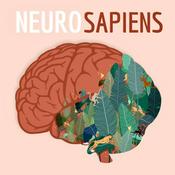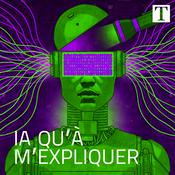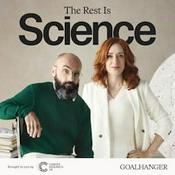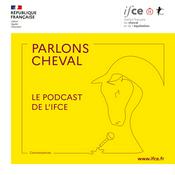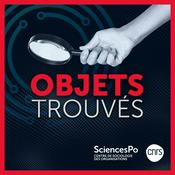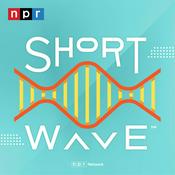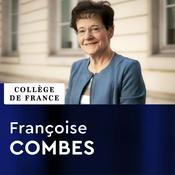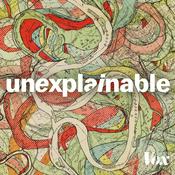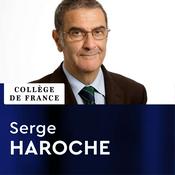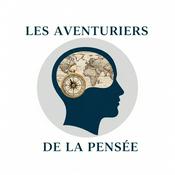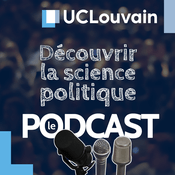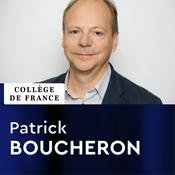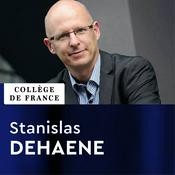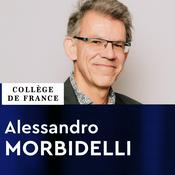73 épisodes
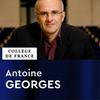
Colloque - Kris van Houcke : Summing Feynman Diagrams for Cold Atomic Fermi Gases
04/6/2025 | 30 min
Antoine GeorgesPhysique de la matière condenséeAnnée 2024-2025Colloque : Recent Advances and Applications of Diagrammatic Monte Carlo for FermionsKris van Houcke : Summing Feynman Diagrams for Cold Atomic Fermi GasesKris van HouckeLaboratoire de Physique de l'ENSRésuméDiagrammatic Monte Carlo (DiagMC) is a versatile numerical technique capable of solving strongly correlated fermion systems in a controlled and accurate way. The core idea behind the technique is to sum all connected Feynman diagrams in a systematic way up to high order. In this talk, I will present some key results that have been obtained for the BEC-BCS crossover and the attractive Hubbard model. These results are directly relevant to experiments on ultra-cold fermionic atoms.In particular, I will discuss the unitary Fermi gas, a model of spin-1/2 fermions in three-dimensional continuous space and a prototypical example of a strongly correlated fermionic system. Despite the fact that the diagrammatic series has a vanishing radius of convergence, key properties such as the equation of state and the contact can still be calculated in an unbiased and accurate way [1,2,3]. When the Fermi gas is highly spin-polarised, the problem reduces to the so-called Fermi polaron problem: a single mobile impurity immersed in an ideal Fermi sea. I will discuss how the connected determinant (CDet) algorithm simplifies in this case and enables the polaron properties to be calculated with unprecedented accuracy [4]. Finally I will present results for the 3D attractive Hubbard model in the superfluid phase obtained with a CDet algorithm that sums diagrams starting from a BCS hamiltonian [5]. Here, we observe convergence of the diagrammatic series. Moreover, our study includes the polarized regime, where conventional quantum Monte Carlo methods suffer from the fermion sign problem. In the limit of high spin polarization the model corresponds to a Fermi polaron on the lattice, for which we recently found that the polaron-dimeron transition at zero temperature disappears at some critical value of the filling fraction [6].Références[1] K. Van Houcke, F. Werner, E. Kozik, N. Prokof'ev, B. Svistunov, M.J.H. Ku, A.T. Sommer, L.W. Cheuk, A. Schirotzek and M.W. Zwierlein, Nature Phys, 8, 366–370 (2012).[2] R. Rossi, T. Ohgoe, E. Kozik, N. Prokof'ev, B. Svistunov, K. Van Houcke and F. Werner, Phys. Rev. Lett., 121, 130406 (2018).[3] R. Rossi, T. Ohgoe, K. Van Houcke and F. Werner, Phys. Rev. Lett., 121, 130405 (2018).[4] K. Van Houcke, F. Werner and R. Rossi, Phys. Rev. B, 101, 045134 (2020)[5] G. Spada, R. Rossi, F. Simkovic, R. Garioud, M. Ferrero, K. Van Houcke and F. Werner, arXiv:2103.12038[6] G. Pascual, J. Boronat and K. Van Houcke, arXiv:2411.19725.

Colloque - Olivier Parcollet : Learning Feynman Diagrams with Tensor Trains
04/6/2025 | 29 min
Antoine GeorgesPhysique de la matière condenséeAnnée 2024-2025Colloque : Recent Advances and Applications of Diagrammatic Monte Carlo for FermionsOlivier Parcollet : Learning Feynman Diagrams with Tensor TrainsOlivier ParcolletFlatiron InstituteRésuméThe real-time dynamics of interacting quantum systems remains a major challenge in computational quantum physics. Surprisingly, high-order perturbative expansions have recently emerged as a promising approach to address this question, even in strong coupling regimes and out-of-equilibrium situations. I will present the cornerstone of these approaches: parsimonious representations of diagrammatic expansions made of tensor networks and revealed by a new generation of algorithms. Finally, I will discuss applications to mesoscopic systems, along with the future perspectives and challenges in this field.

Colloque - Michel Ferrero : Origin and Fate of the Pseudogap in the Doped Hubbard Model: A Diagrammatic Monte Carlo Study
04/6/2025 | 30 min
Antoine GeorgesPhysique de la matière condenséeAnnée 2024-2025Colloque : Recent Advances and Applications of Diagrammatic Monte Carlo for FermionsMichel Ferrero : Origin and Fate of the Pseudogap in the Doped Hubbard Model: A Diagrammatic Monte Carlo StudyMichel FerreroÉcole Polytechnique, CPHT, Collège de FranceRésuméIn this seminar, I will introduce the diagrammatic Monte Carlo method and discuss its application to the two-dimensional Hubbard model at finite temperature. The results obtained through this approach are controlled and, importantly, address the infinite-size limit of the model, thus yielding physical quantities with arbitrary momentum resolution. This enables a detailed investigation of the impact of electronic correlations on the spectral properties, with a particular focus on the Fermi surface topology and the pseudogap regime. We demonstrate the selective suppression of quasiparticle excitations near the antinodal regions due to the development of magnetic correlations, observed both in the weak coupling regime with a large correlation length and in the strong coupling regime with a shorter correlation length. Furthermore, I will discuss how a modified spin-fluctuation theory can account for these findings. Finally, the evolution of the pseudogap regime with decreasing temperature will be examined, revealing its instability and eventual transition into an ordered stripe phase, consistent with ground-state calculations.

Colloque - Thomas Schäfer : Bridging the Gap of Multi-Method, Multi-Messenger Studies from Known to Unknown Fluctuations
04/6/2025 | 27 min
Antoine GeorgesPhysique de la matière condenséeAnnée 2024-2025Colloque : Recent Advances and Applications of Diagrammatic Monte Carlo for FermionsThomas Schäfer : Bridging the Gap of Multi-Method, Multi-Messenger Studies from Known to Unknown FluctuationsThomas SchäferMax Planck Institute for Solid State Research, StuttgartRésuméThe strong mutual repulsion of electrons is responsible for some of the most interesting phenomena in contemporary condensed matter physics, where examples range from unconventional high-temperature superconductivity, over quantum criticality to Mott metal-to-insulator transitions. Despite the intense research on the quantum many-body problem over the last decades, many of its aspects have not yet been fully understood. Recent progress, however, has been achieved by the application of so-called multi-method, multi-messenger studies of the most fundamental model for electronic correlations, the Hubbard model [1,2].In the first part of the talk, I will present such a study of the half-filled two-dimensional Hubbard model on a simple square lattice at small values of the local Coulomb interaction [1]. I will demonstrate that the footprints of spin fluctuations can be tracked by a rich series of crossovers in multiple observables by multiple numerical techniques. In the second part of the talk, I will show how one can determine which fluctuation channel (charge, spin, particle-particle) is responsible for spectral properties such as the pseudogap in the strong coupling regime, directly relevant to cuprates. For this I will introduce the so-called "fluctuation diagnostics" approach [3,4], which can be utilized on top of diverse numerical methods, making it a helpful tool for future multi-method studies of strongly correlated phenomena.Références[1] Thomas Schäfer, Nils Wentzell, Fedor Šimkovic IV, Yuan-Yao He, Cornelia Hille, Marcel Klett, Christian J. Eckhardt, Behnam Arzhang, Viktor Harkov, François-Marie Le Régent, Alfred Kirsch, Yan Wang, Aaram J. Kim, Evgeny Kozik, Evgeny A. Stepanov, Anna Kauch, Sabine Andergassen, Philipp Hansmann, Daniel Rohe, Yuri M. Vilk, James P. F. LeBlanc, Shiwei Zhang, A.-M. S. Tremblay, Michel Ferrero, Olivier Parcollet, Antoine Georges, "Tracking the Footprints of Spin Fluctuations: A Multi-Method, Multi-Messenger Study of the Two-Dimensional Hubbard Model", Phys. Rev. X, 11, 011058 (2021).[2] Alexander Wietek, Riccardo Rossi, Fedor Šimkovic IV, Marcel Klett, Philipp Hansmann, Michel Ferrero, E. Miles Stoudenmire, Thomas Schäfer, and Antoine Georges, "Mott insulating states with competing orders in the triangular lattice Hubbard model", Phys. Rev. X, 11, 041013 (2021).[3] O. Gunnarsson, T. Schäfer, J. LeBlanc, E. Gull, J. Merino, G. Sangiovanni, G. Rohringer, and A. Toschi, "Fluctuation Diagnostics of the Electron Self-Energy: Origin of the Pseudogap Physics", Phys. Rev. Lett., 114, 236402 (2015).[4] Thomas Schäfer and Alessandro Toschi, "How to read between the lines of electronic spectra: the diagnostics of fluctuations in strongly correlated electron systems", J. Phys.: Condens. Matter, 33, 214001 (2021).

Séminaire - Corinna Kollathh : Controlling the Cold Atomic Gases via the Coupling to a Dissipative Cavity
28/5/2025 | 43 min
Antoine GeorgesPhysique de la matière condenséeAnnée 2024-2025Fermions froids et simulation quantiqueSéminaire - Corinna Kollathh : Controlling the Cold Atomic Gases via the Coupling to a Dissipative CavityCorinna KollathUniversité de BonnRésuméQuantum gases in optical cavities have shown many exciting phenomena as the self-organization into superradiant phases. Additionally many complex phases have been predicted to be realizable in these systems reaching from topologically interesting phases to glass like phases. The theoretical treatment of these systems is very difficult due to the presence of the long range coupling of the cavity to the atoms and fluctuations need to be critically taken into account. We investigate bosonic and fermionic atoms on a lattice and coupled to an optical cavity using many-body adiabatic elimination technique to capture the global coupling to the cavity mode and the open nature of the cavity. We discover the self-organization of approximate symmetries and find a new type of bistabilities which are caused by the excited states in the system.
Plus de podcasts Sciences
Podcasts tendance de Sciences
À propos de Physique de la matière condensée - Antoine Georges
Écoutez Physique de la matière condensée - Antoine Georges, Hidden Brain ou d'autres podcasts du monde entier - avec l'app de radio.fr

Obtenez l’app radio.fr gratuite
- Ajout de radios et podcasts en favoris
- Diffusion via Wi-Fi ou Bluetooth
- Carplay & Android Auto compatibles
- Et encore plus de fonctionnalités
Obtenez l’app radio.fr gratuite
- Ajout de radios et podcasts en favoris
- Diffusion via Wi-Fi ou Bluetooth
- Carplay & Android Auto compatibles
- Et encore plus de fonctionnalités


Physique de la matière condensée - Antoine Georges
Téléchargez l’app,
Écoutez.




